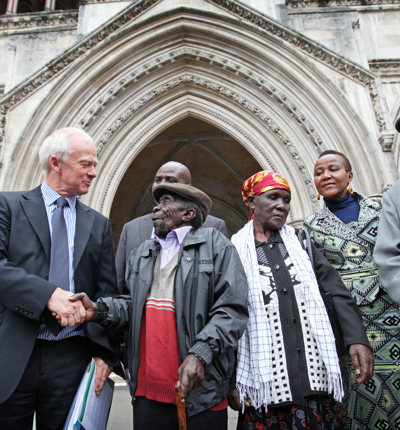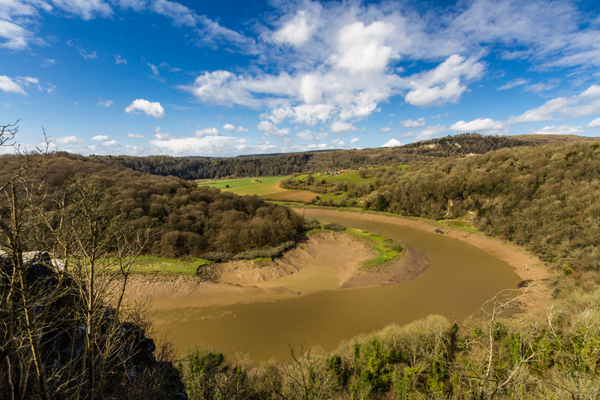
Black History Month: the Mau Mau case
In the context of Black History Month, David Roberts and Alex Wessely reflect on the Mau Mau case, which ran for four years between June 2009 and June 2013, and which shone a light on Britain's colonial past.
Posted on 23 October 2020
The case was ground-breaking in many respects, representing the first time it was successfully argued that the British Government could be held responsible for the abuses committed by a British colonial administration during the colonial era.
The case arose out of the Kenya Emergency, a state of emergency declared in Kenya between 1952 until 1960, a period in which hundreds of thousands of Kenyans were detained in a network of prisons, detention camps and enforced villages. The emergency was called amidst growing calls for equal representation and rights in Kenya, and in direct response to those, the Mau Mau, willing to take up arms and fight to achieve it.
Extreme violence was used by British colonial forces towards those arrested and detained to compel them to confess to being Mau Mau. Perversely, the violence was a deliberate policy aimed at “rehabilitating” detainees. Separately, the colonial administration carried out a policy of population control called “villagization”. This entailed the forced resettlement of over a million ethnic Kikuyu.
In June, 2013 Leigh Day successfully negotiated a settlement with the British Government on behalf of 5,228 victims. As part of that settlement, the British government funded a memorial in Nairobi to the victims of the Emergency and the then foreign secretary, William Hague, made a statement on behalf of the British Government to Parliament that “the British government sincerely regrets that these abuses took place”. This was a historic vindication for the victims.
Witness Evidence
The Emergency ended in 1960. Whilst this meant that many of those who were responsible for the creation and implementation of the system of detention and ‘rehabilitation’ had died, many of those who had been detained in their teens, 20s and 30s were still alive.
Unlike many colonial atrocities which are recorded only in books or passed down as shared history through the generations, some of the victims of the colonial atrocity still lived.
The case was told through their direct accounts and it was through their evidence, supported by extensive contemporaneous archival records, that this period of colonial history was re-evaluated and is now being seen in its proper context.
During the hearings the lead claimants gave evidence about the horrific torture they had endured at the hands of the British colonial administration in Kenya. This included one claimant who was castrated with large pliers, and another who was sexually assaulted with a glass bottle filled with boiling water. The force of the claimants’ evidence was striking and, in a historic moment, in Court the British government explicitly accepted that such abuses had been carried out “at the hands of the Colonial Administration”. These acts of brutality were not uncommon during the Emergency. We formed part of the team who spent almost a year in Kenya interviewing further victims. Our team spoke to over 20,000 elderly men and women, many of whom had similar accounts of horrific violence.
Alongside the work of victims’ associations, civil society and academics, the case played a key role in publicising those accounts to set the record straight.
Documentary Evidence
The events themselves – and Britain’s culpability for them – had been obscured and suppressed for decades, despite the events having taken place in living memory. Almost the moment the Emergency began, the government waged an enormously successful propaganda campaign against the Kenyans, and the effects of their efforts lasted decades.
Finding out the truth was further hindered by the deliberate decimation of the archival record. Evidence of colonial crimes were deliberately and systematically destroyed during Operation Legacy. Colonial administrators took with them the most incriminating documents and hid or disposed of them.
The case played a part in helping to correct this historic wrong. During the case, the British Government was forced to disclose the existence of a “migrated archive”: a collection of sensitive and incriminating documents which were deliberately taken from the former colonies in order to avoid embarrassment.
The documents revealed, among other things, that the government prioritised concealing extreme violence over preventing it. This is clear from the memo from Kenya’s Attorney General, Eric Griffith Jones, to the Governor of Kenya, Sir Evelyn Baring: “if we are going to sin, we must sin quietly”.
Racial Prejudices
This month is also an opportunity to examine whether racial prejudices at the time led or contributed to the atrocities committed in Kenya. The Hansard speeches of 1952-1960 are littered with evidence of this.
Parliament heard in 1952 that “anyone who has lived among primitive peoples knows that one cannot deal with them or judge them in the same way as if they were educated and advanced people”.
In 1953, Parliament was told that Mau Mau “was a secret society which sucked its poison from witchcraft, from a hatred of the white man, from a hatred of Christianity, and it gained its force by unleashing a primeval savagery”.
A 1954 speech discussed the “the problem of Kenya” as being that “a primitive people are trying within 70 years to arrive at the position that it has taken us 700 years to reach”.
In 1955, the House of Lords was told to remember that the Mau Mau “are not civilised people; they are murdering savages… and I do not think we can deal with them in the sort of way in which we might deal with people who had a large percentage of education and culture”.
Following the Hola Massacre (during which 11 men were beaten to death), the colonial secretary Alan Lennox-Boyd sought to contextualise the killings by referring to the “bestiality of Mau Mau”, whom he described as “sub-human creatures, without hope and with death as their only deliverance… [a minority] irrevocably lost to decent society”.
It is worth noting that this hate-filled, prejudiced rhetoric was being espoused at the time that Britain wrote and signed the European Convention on Human Rights – guaranteeing British citizens protection from the very same crimes that were being meted out to Kenyans under our control.
Around the same time that we guaranteed British citizens a right to liberty, the Secretary of State for the Colonies spoke of the “principle” of detaining 17,000 Kenyans without trial: “we must accept that we sometimes have to detain without trial because the evidence is not forthcoming”.
While awaiting trials that never came, these detainees were subjected to systematic torture and beatings as methods of interrogation – some in British concentration camps bearing chilling signs over their gates such as “He Who Helps Himself Will Also Be Helped” (Aguthi Camp) and “Labour and Freedom” (Ngenya Camp).
The systematic torture and abuse to which Kenyans were subjected was made possible at the time because the perpetrators failed to recognise the humanity of the Kenyan victims, and allowed themselves to develop a hierarchy of those who deserve human rights and those who don’t.
This Black History Month, it is essential to examine the horrific consequences of what can happen when a government allows racial prejudices to inform their actions, and to ensure that these mistakes are not repeated and those responsible are held to account.

